An Improved Method of Reservoir Facies Modeling Based on Generative Adversarial Networks
Abstract
:1. Introduction
2. Principle of Method
3. Facies Modeling Methods
3.1. Concept
3.2. Unconditional Modeling Method
- (1)
- The cross entropy of the discrimination results of TIs x and generated facies models G(z) with labels of true and false is propagated back in discriminator network D, and its parameters are updated to enhance its discrimination capability (Figure 6, process ①).
- (2)
- The cross entropy of the discrimination results of generated facies models G(z) with the true labels is propagated back in generator network G, and its parameters are updated to enhance its capability of generating the facies models which meet the prior geological patterns (Figure 6, process ②).
- (3)
- Step 1 and step 2 are carried out alternately according to a certain frequency in an epoch, until the generator network is able to generate facies models consistent with the prior geological patterns.
3.3. Conditional Modeling Method
- (1)
- Taking random noises z and TIs x as input, the generator network G and discriminator network D (Figure 6, processes ① and ②) are alternately trained. The process is the same as step 1 and step 2 in the unconditional modeling method.
- (2)
- Taking random noises z’ as input, the facies models G(z’) are generated, then the error between the G(z’) and hard data h at the well point is calculated. The generator network G is updated by back propagating the error and tries to generate facies models honoring the hard data h (Figure 6, process ③).
- (3)
- Step 1 and step 2 are carried out alternately until the generated facies models meet the prior geological patterns.
- (4)
- Input the random noises z’ into the generator network G to generate the modeling results G(z’).
3.4. Loss Function
3.5. Modeling Workflow
4. Verification and Application
4.1. Verification
4.1.1. Unconditional Modeling
4.1.2. Conditional Modeling
4.2. Comparison
4.3. Application Examples
5. Conclusions and Discussion
Author Contributions
Funding
Acknowledgments
Conflicts of Interest
References
- Wu, S.H.; Li, Y.P. Reservoir modeling: Current Situation and Development Prospect. Mar. Orig. Pet. Geol. 2007, 12, 53–60. [Google Scholar]
- Zhang, Y.Q.; Ma, S.Z.; Gao, Y.; Li, Y.Y.; Zhang, J.; Wang, L.; Sun, Y.; Xu, F.Z.; Li, H. Depositional Facies Analysis on Tight Reservoir of Lucaogou Formation in Jimsar Sag, Junggar Basin. Acta Sedimentol. Sin. 2017, 35, 358–370. [Google Scholar]
- Yang, S.C.; Zhao, X.D.; Zhang, X. Prediction of “sweet spots” of tight sandstone gas reservoirs in Jishen 1 area, Turpan-Hami Basin. J. Xi’an Shiyou Univ. Nat. Sci. Ed. 2014, 29, 1–8. [Google Scholar]
- Kovalevski, E.B. Geological Modeling Based on Geostatistics; Petroleum Industry Press: Beijing, China, 2014. [Google Scholar]
- Krige, D.G. A Statistical Approach to Some Basic Mine Valuation Problems on the Witwatersrand. J. Chem. Metall. Min. Soc. S. Afr. 1951, 94, 95–111. [Google Scholar]
- Matheron, G. Principles of geostatistics. Econ. Geol. 1963, 58, 1246–1266. [Google Scholar] [CrossRef]
- Strebelle, S. Sequential Simulation Drawing Structures from Training Images. Ph.D. Thesis, Stanford University, Stanford, CA, USA, 2000. [Google Scholar]
- Aprat, B.G.; Caers, J. A Multi-Scale, Pattern-Based Approch to Sequantial Simulation; Stanford Center for Reservoir Forecasting: Stanford, CA, USA, 2003. [Google Scholar]
- Zhang, T.F.; Switzer, P.; Journel, A. Filter-Based Classification of Training Image Patterns for Spatial Simulation. Math. Geol. 2006, 38, 63–80. [Google Scholar] [CrossRef]
- Caers, J.; Ma, X. Modeling Conditional Distributions of Facies from Seismic Using Neural Nets. Math. Geosci. 2002, 34, 143–167. [Google Scholar]
- Caers, J.; Zhang, T.F. Multiple-point Geostatistics: A Quantitative Vehicle for Integrating Geologic Analogs into Multiple Reservoir Models. AAPG Mem. 2004, 80, 383–394. [Google Scholar]
- Zou, C.N. Unconventional Petroleum Geology, 2nd ed.; Geological Publishing House: Beijing, China, 2013. [Google Scholar]
- Goodfellow, I.J.; Pouget-Abadie, J.; Mirza, M.; Xu, B.; Warde-Farley, D.; Ozair, S.; Courville, A.; Bengio, Y. Generative Adversarial Networks. Adv. Neural Inf. Process. Syst. 2014, 3, 2672–2680. [Google Scholar]
- Radford, A.; Metz, L.; Soumith, C. Unsupervised representation learning with deep convolutional generative adversarial networks. arXiv 2015, arXiv:1511.06434. [Google Scholar]
- Caers, J.; Journel, A.G. Stochastic Reservoir Simulation Using Neural Networks Trained on Outcrop Data; SPE Annual Technical Conference and Exhibition: New Orleans, LA, USA, 1998. [Google Scholar]
- Cao, K. Key Techniques of 3-D Property Modeling Based on Multiple-Point Simulation. Ph.D. Thesis, Peking University, Beijing, China, 2017. [Google Scholar]
- Chan, S.; Elsheikh, A.H. Parametrization and Generation of Geological Models with Generative Adversarial Networks. arXiv 2017, arXiv:1708.01810. [Google Scholar]
- Laloy, E.; Hérault, R.; Jacques, D. Training-image based geostatistical inversion using a spatial generative adversarial neural network. Water Resour. Res. 2018, 54, 381–406. [Google Scholar] [CrossRef] [Green Version]
- Dupont, E.; Zhang, T.F.; Tilke, P. Generating Realistic Geology Conditioned on Physical Measurements with Generative Adversarial Networks. arXiv 2018, arXiv:1802.03065. [Google Scholar]
- Zhang, T.F.; Tilke, P.; Dupont, E. Generating Geologically Realistic 3D Reservoir Facies Models Using Deep Learning of Sedimentary Architecture with Generative Adversarial Networks. In Proceedings of the International Petroleum Technology Conference, Beijing, China, 26–28 March 2019. [Google Scholar]
- Avalos, S.; Ortiz, J.M. Geological modeling using a recursive convolutional neural networks approach. arXiv 2019, arXiv:1904.12190. [Google Scholar]
- Kim, J.; Kim, S.; Park, C.; Lee, K. Construction of prior models for ES-MDA by a deep neural network with a stacked autoencoder for predicting reservoir production. J. Pet. Sci. Eng. 2020, 187, 106800. [Google Scholar] [CrossRef]
- Yang, P.J. Multiple-points geostatistics stochastic simulation based on patterns clustering and matching. Prog. Geophys. 2018, 33, 279–284. [Google Scholar]
- Zhang, Z.M. Development and tendency of techniques for fluvial reservoir description in Shengli shallow beach sea. Prog. Geophys. 2017, 32, 822–826. [Google Scholar]
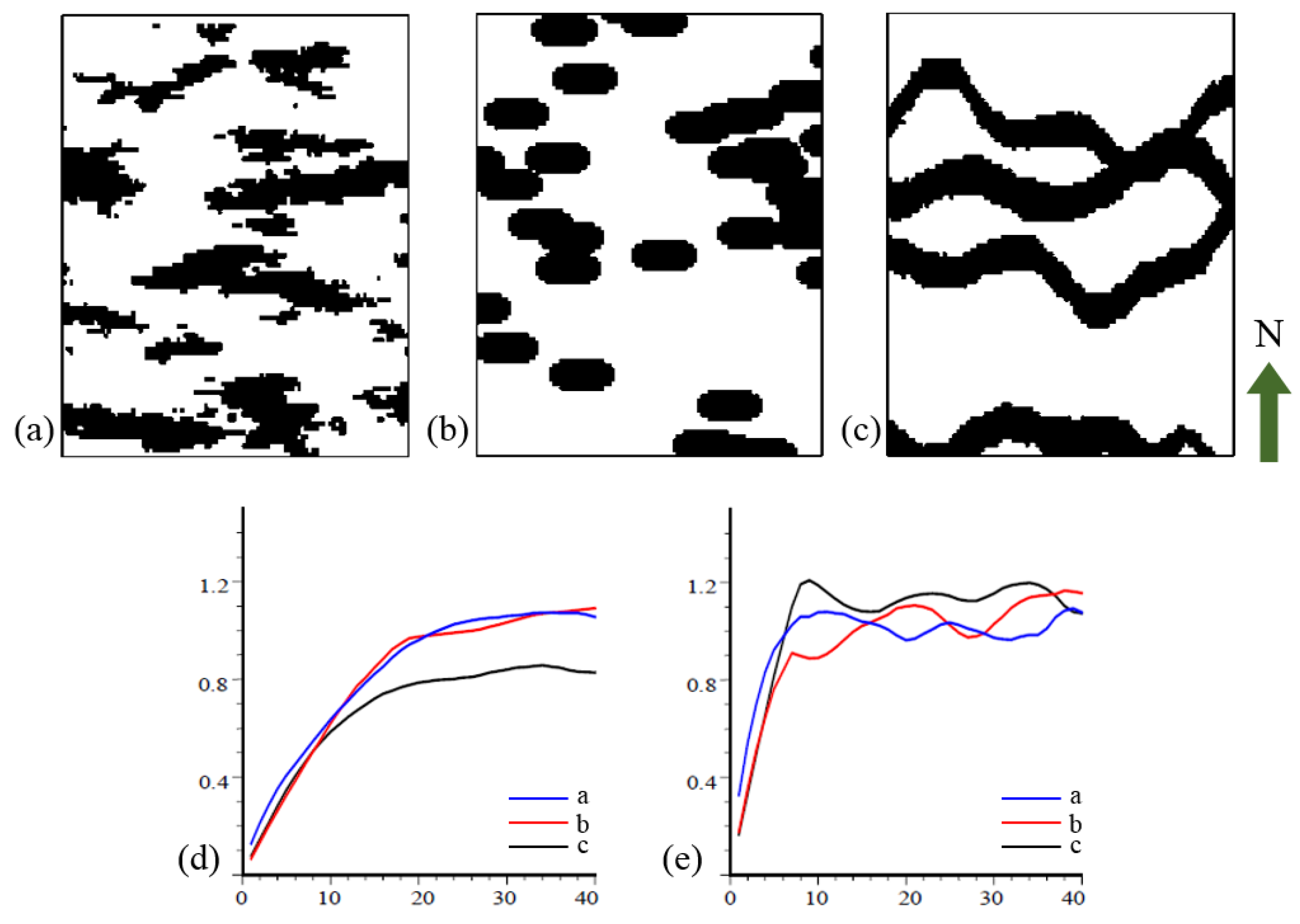
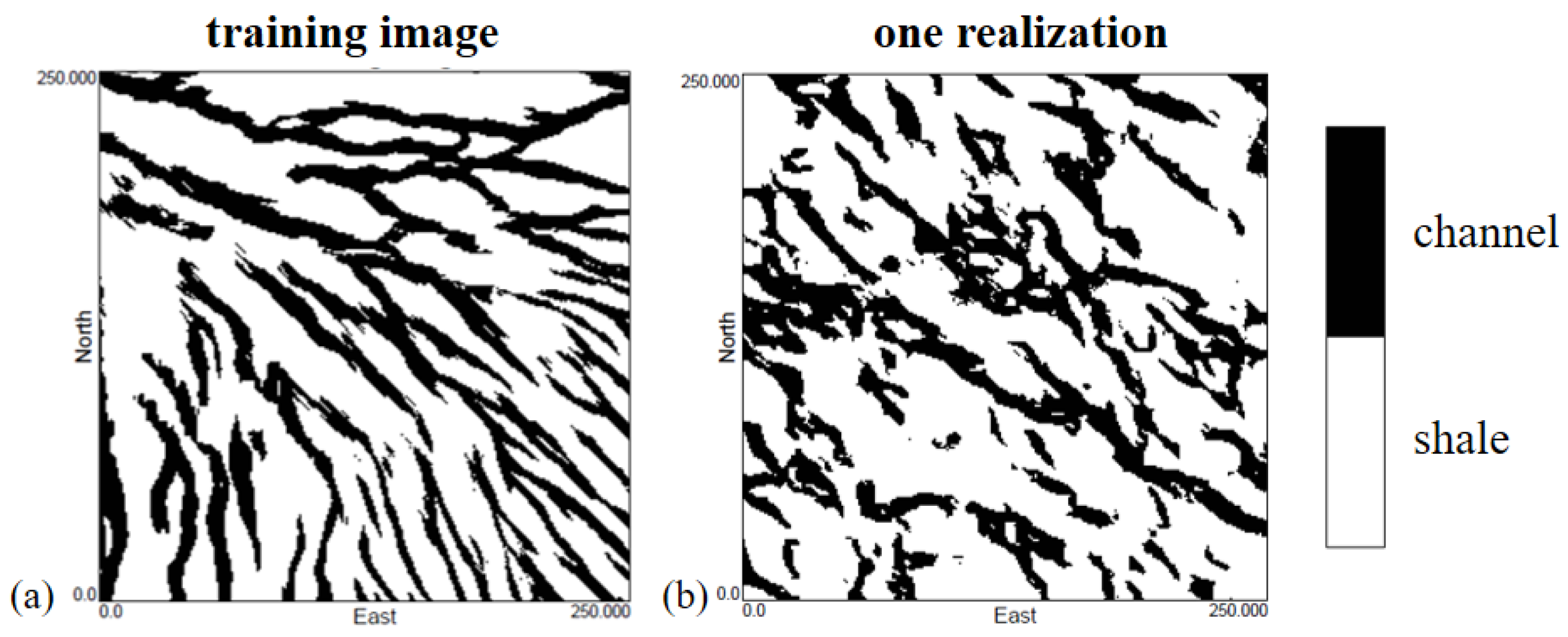

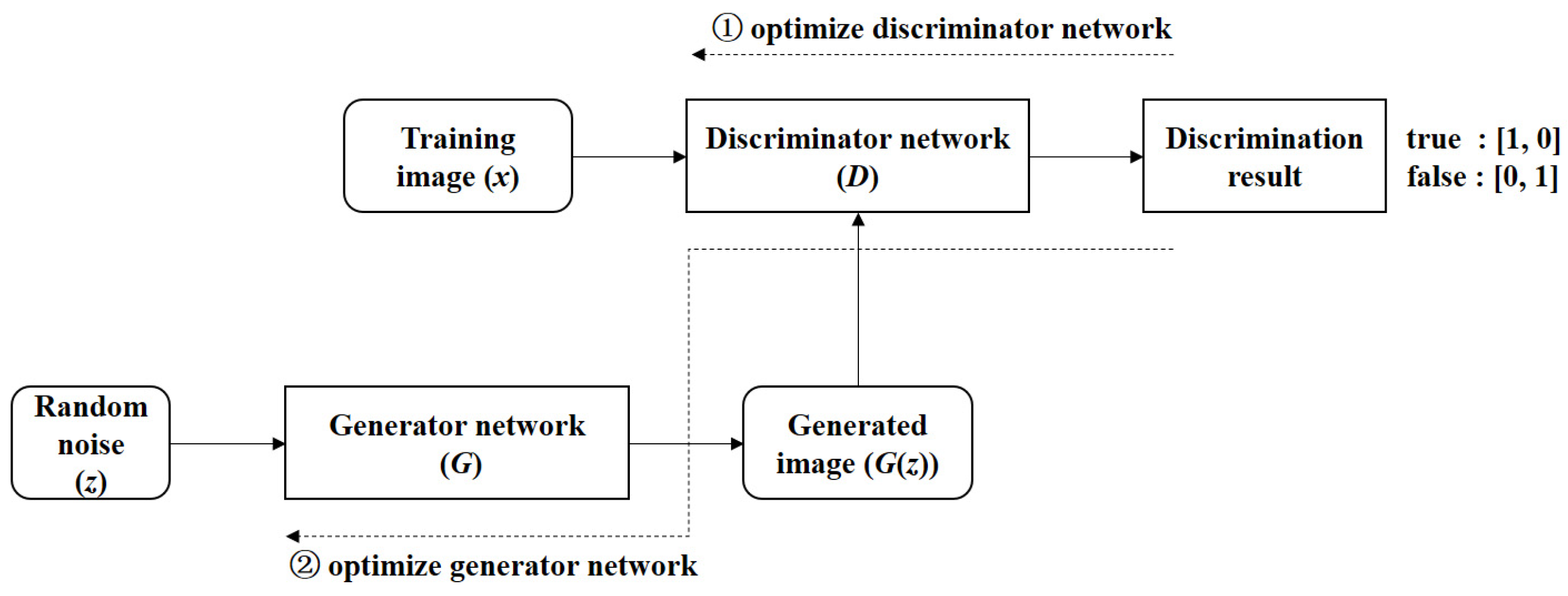
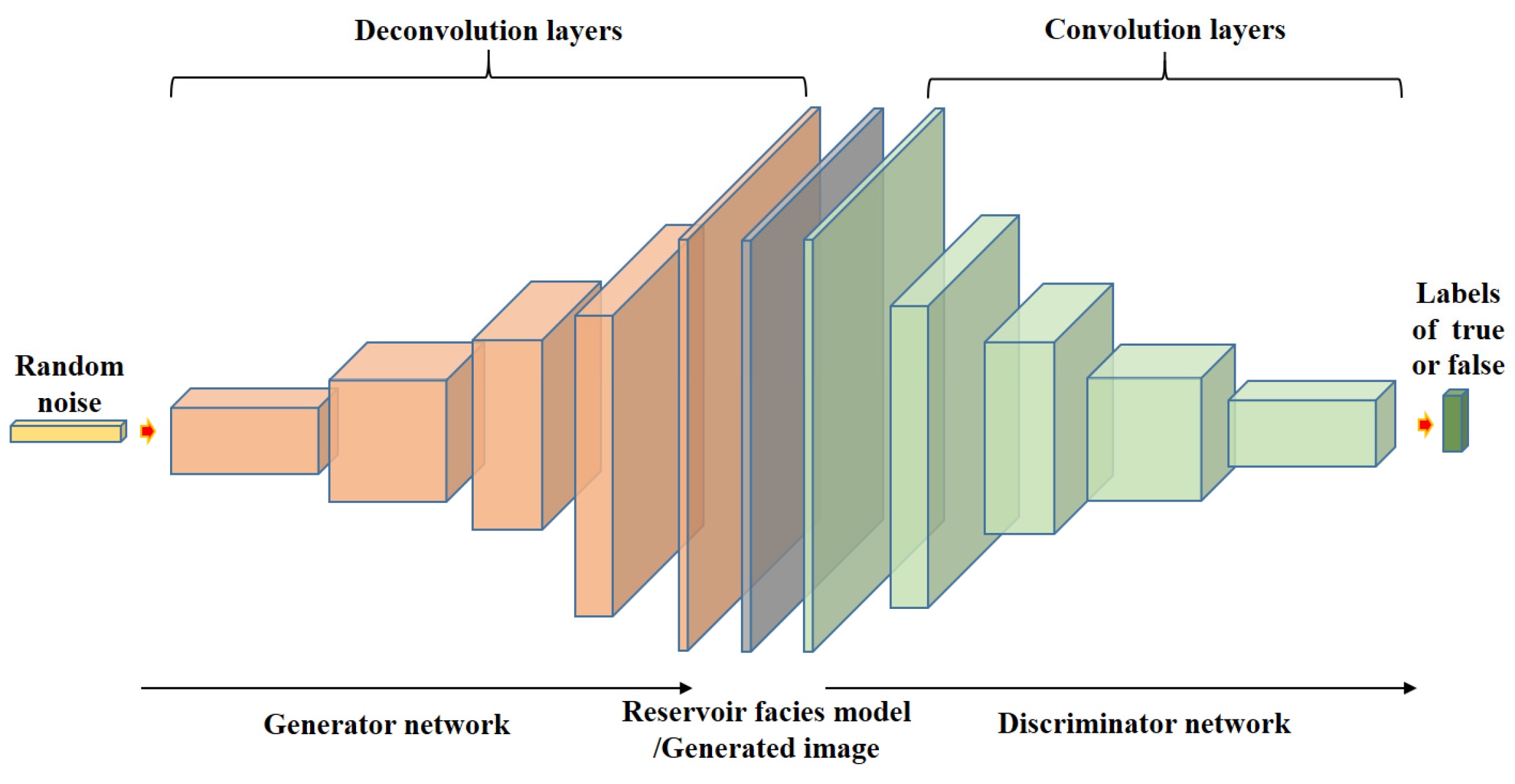
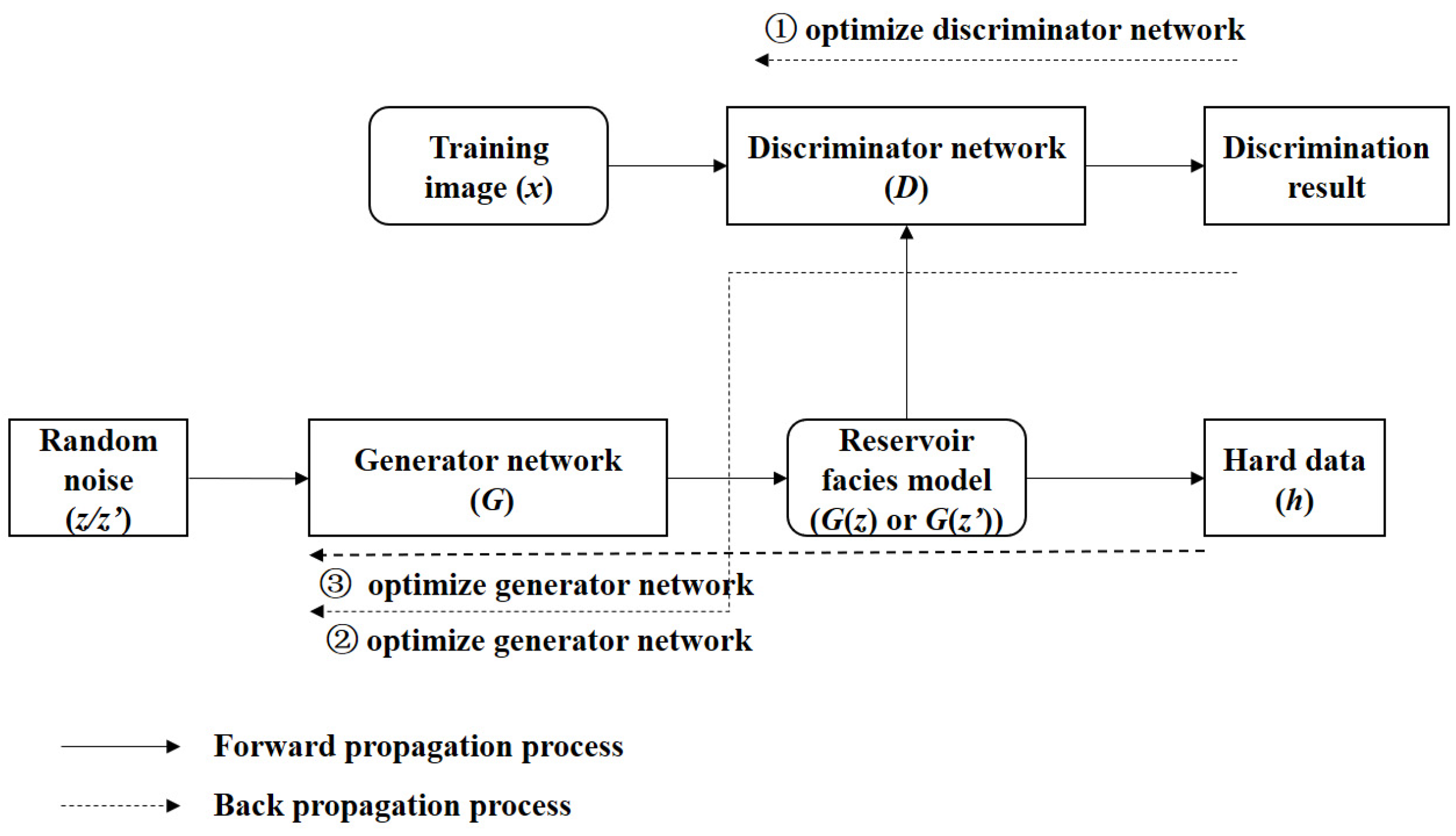
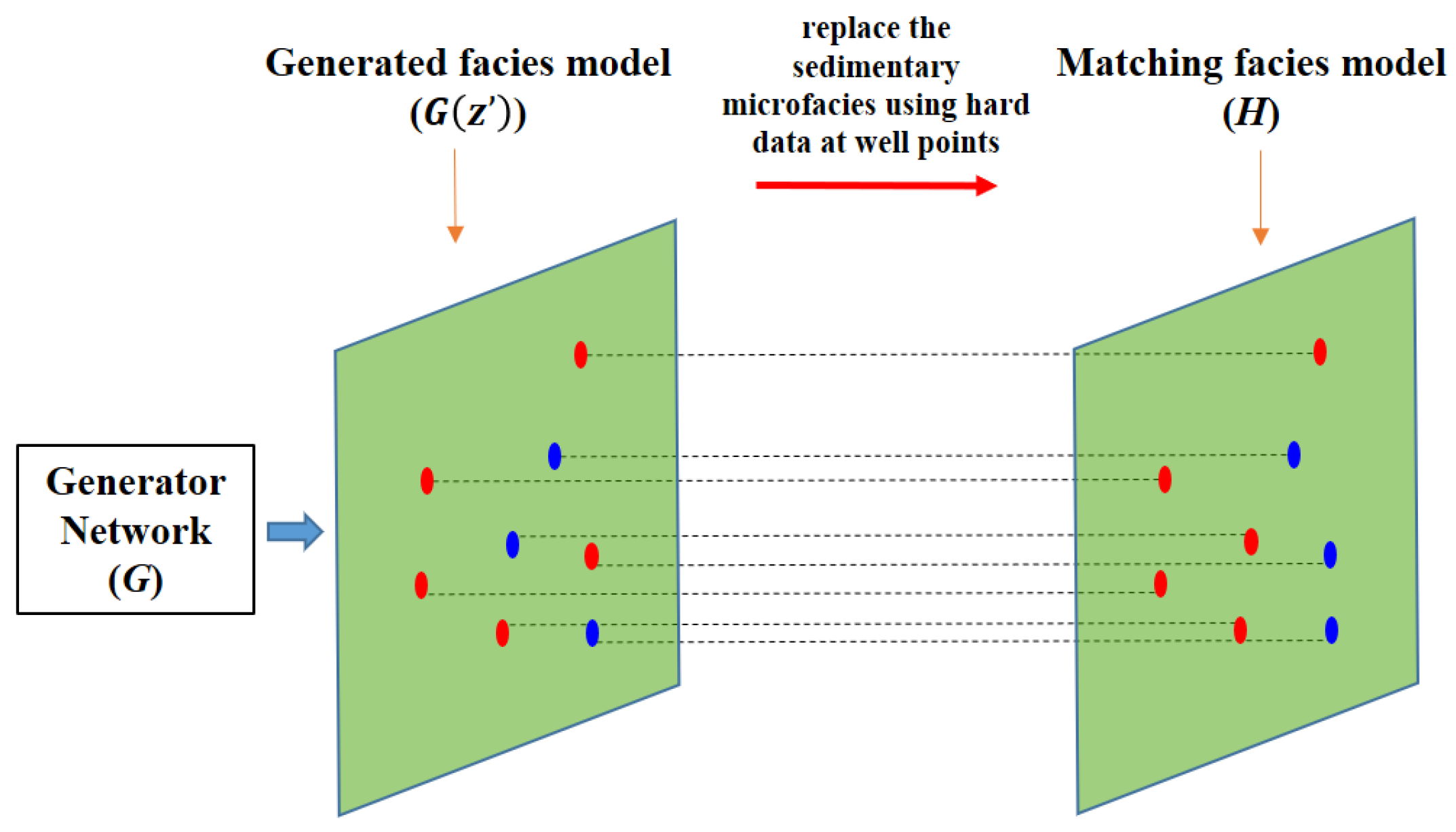
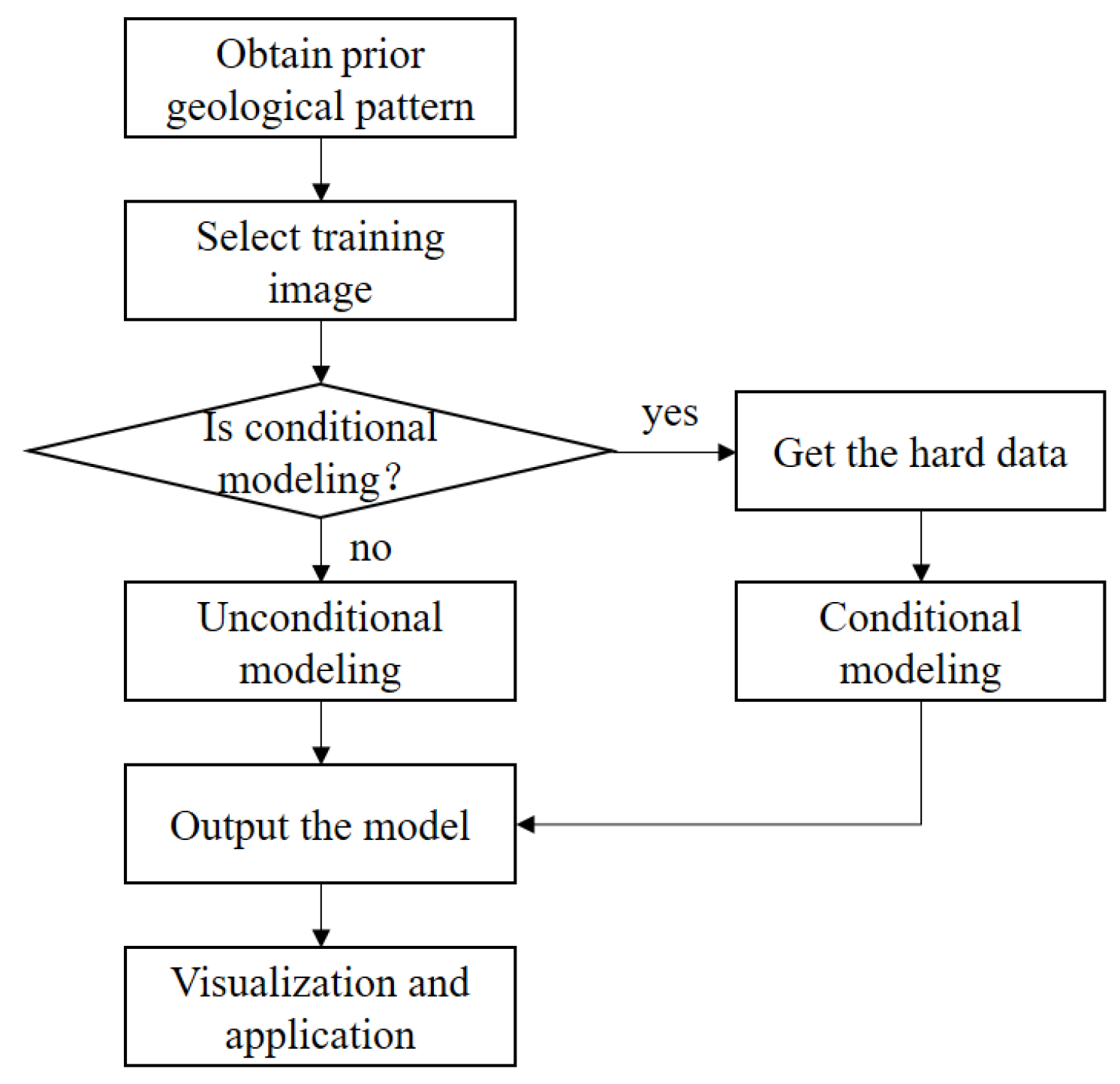
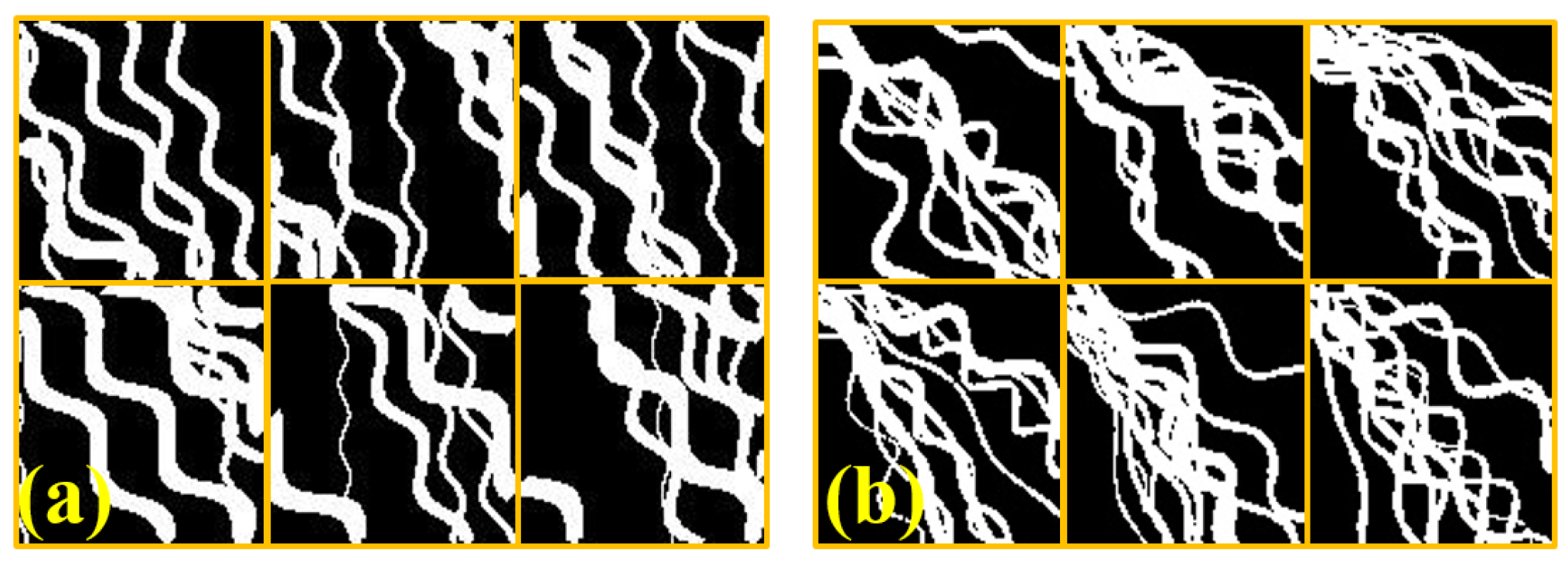
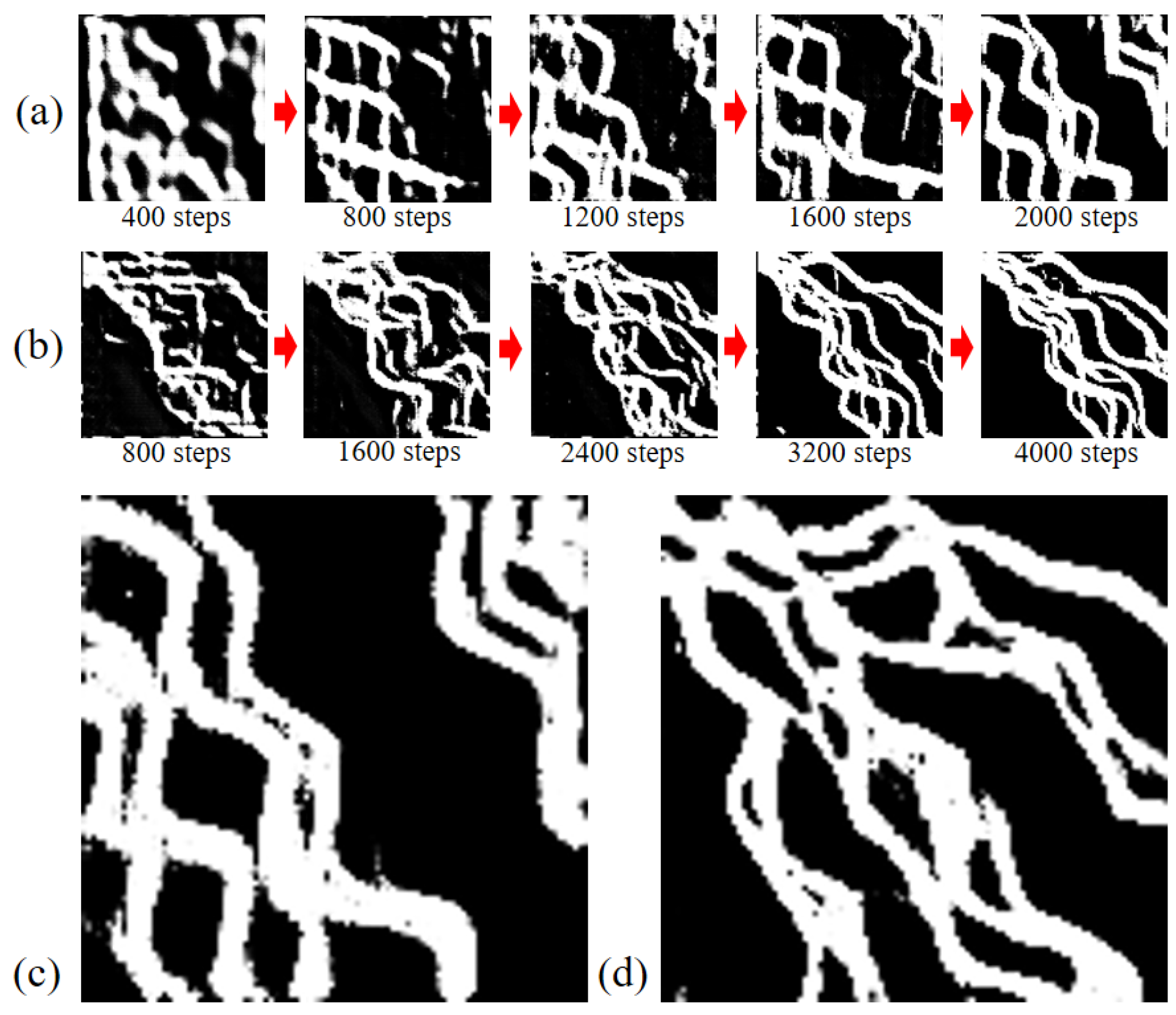
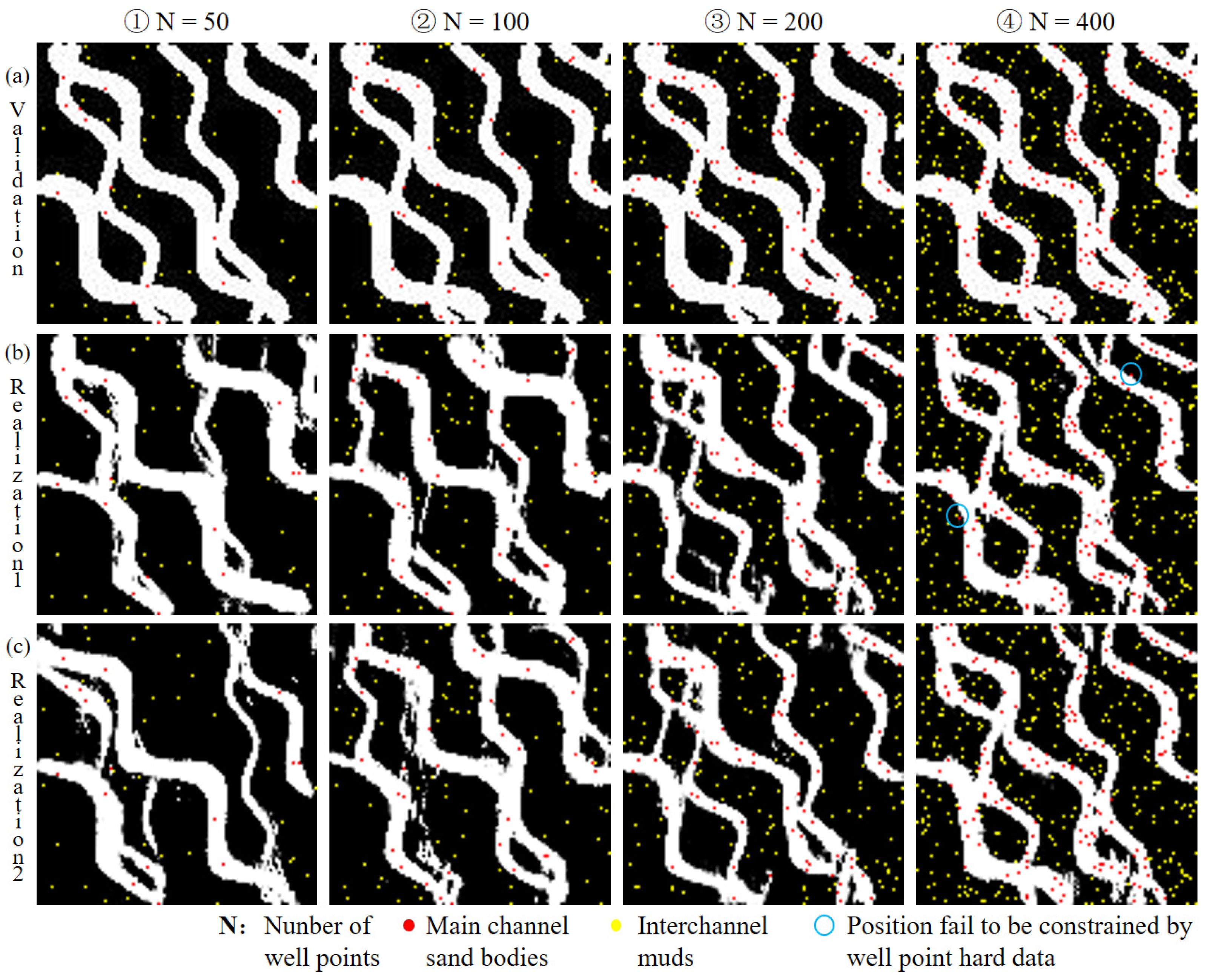
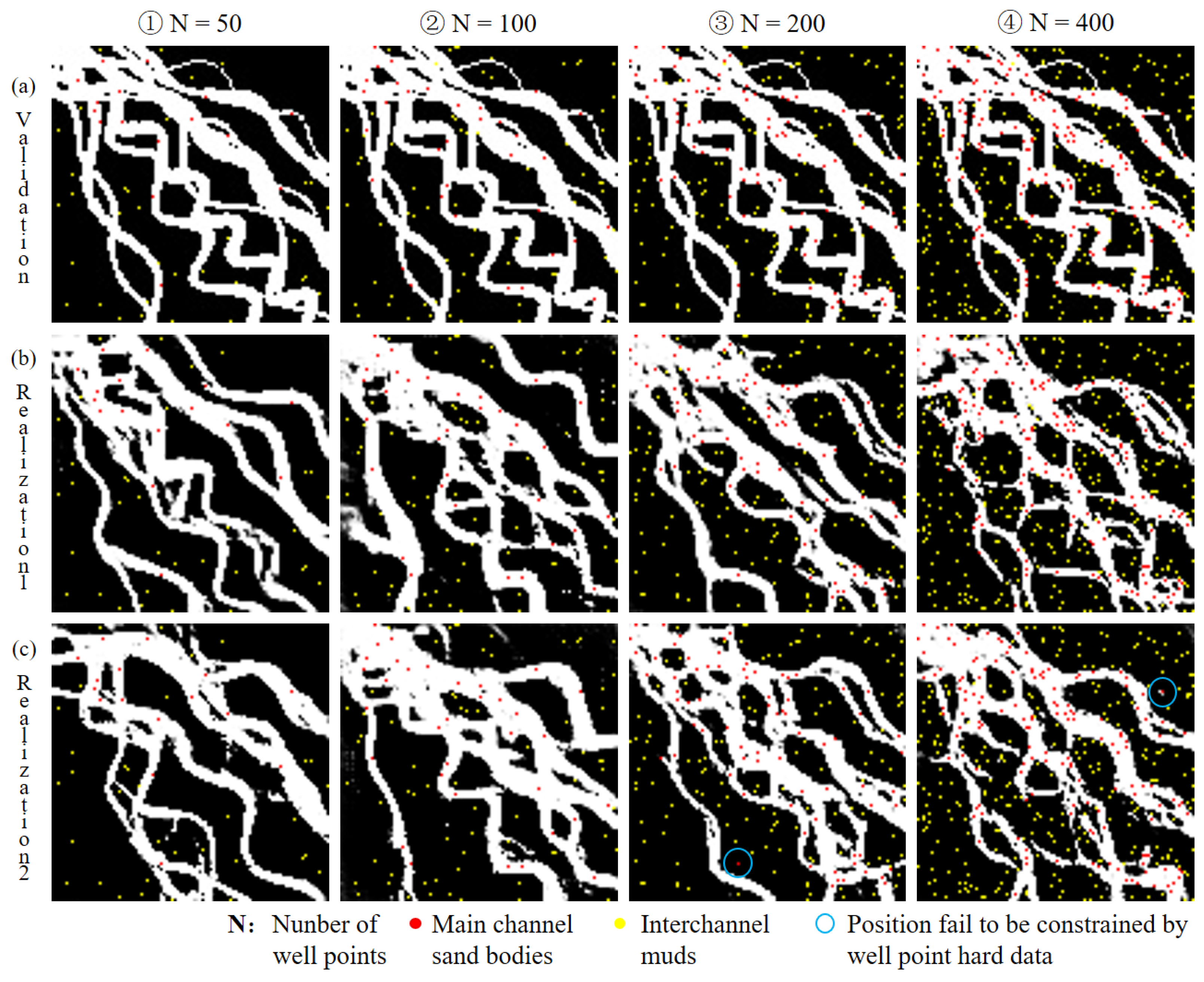
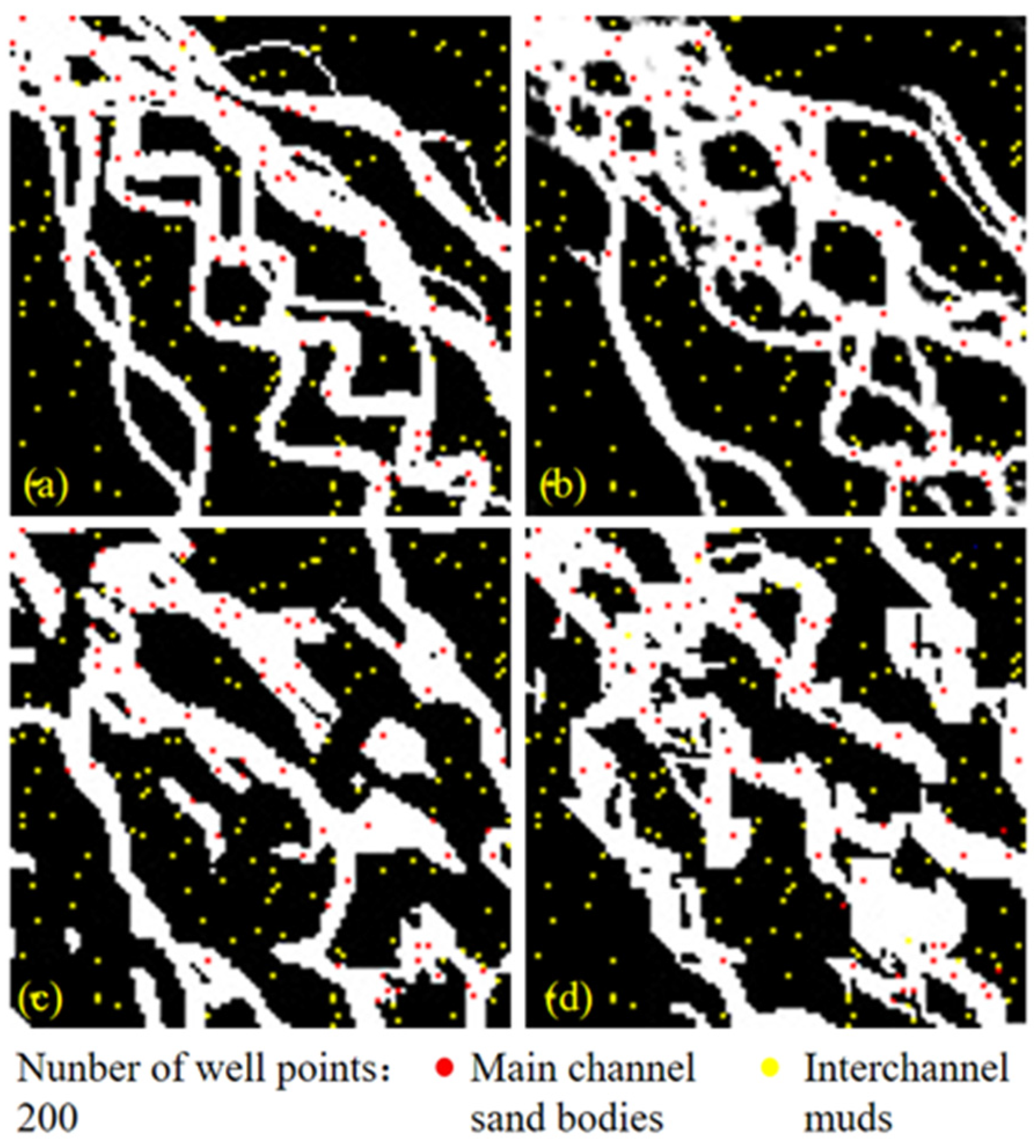
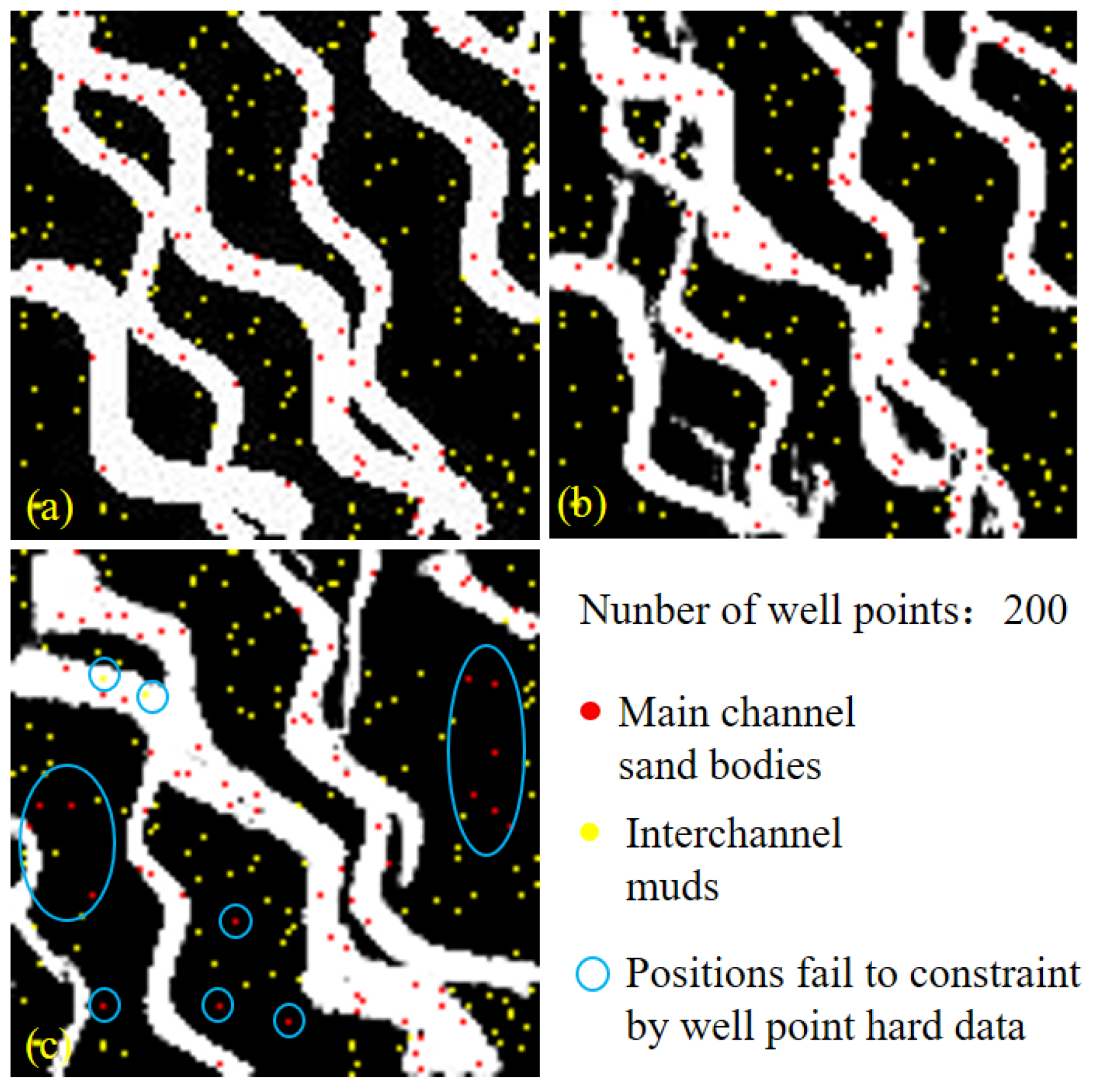
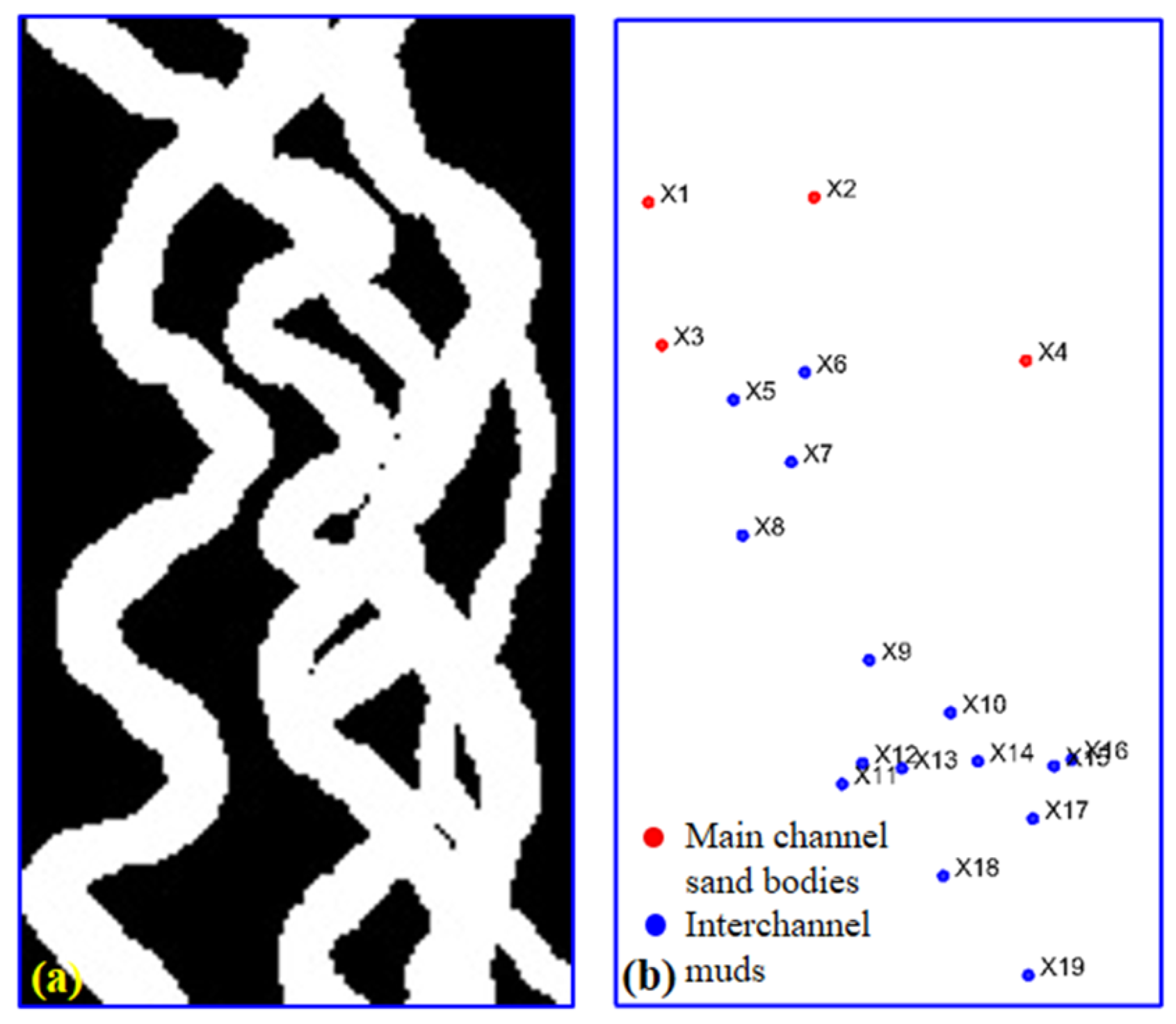
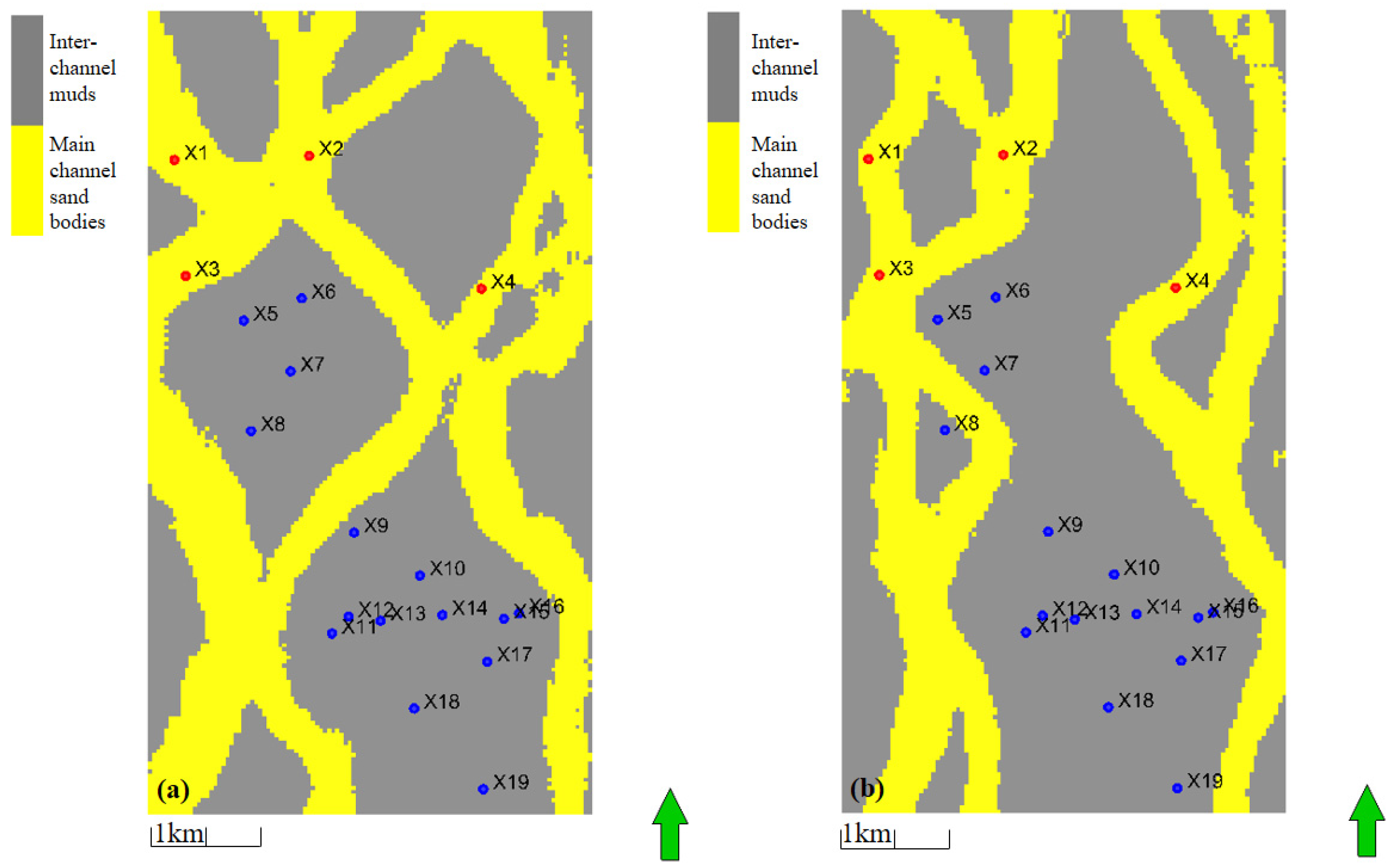
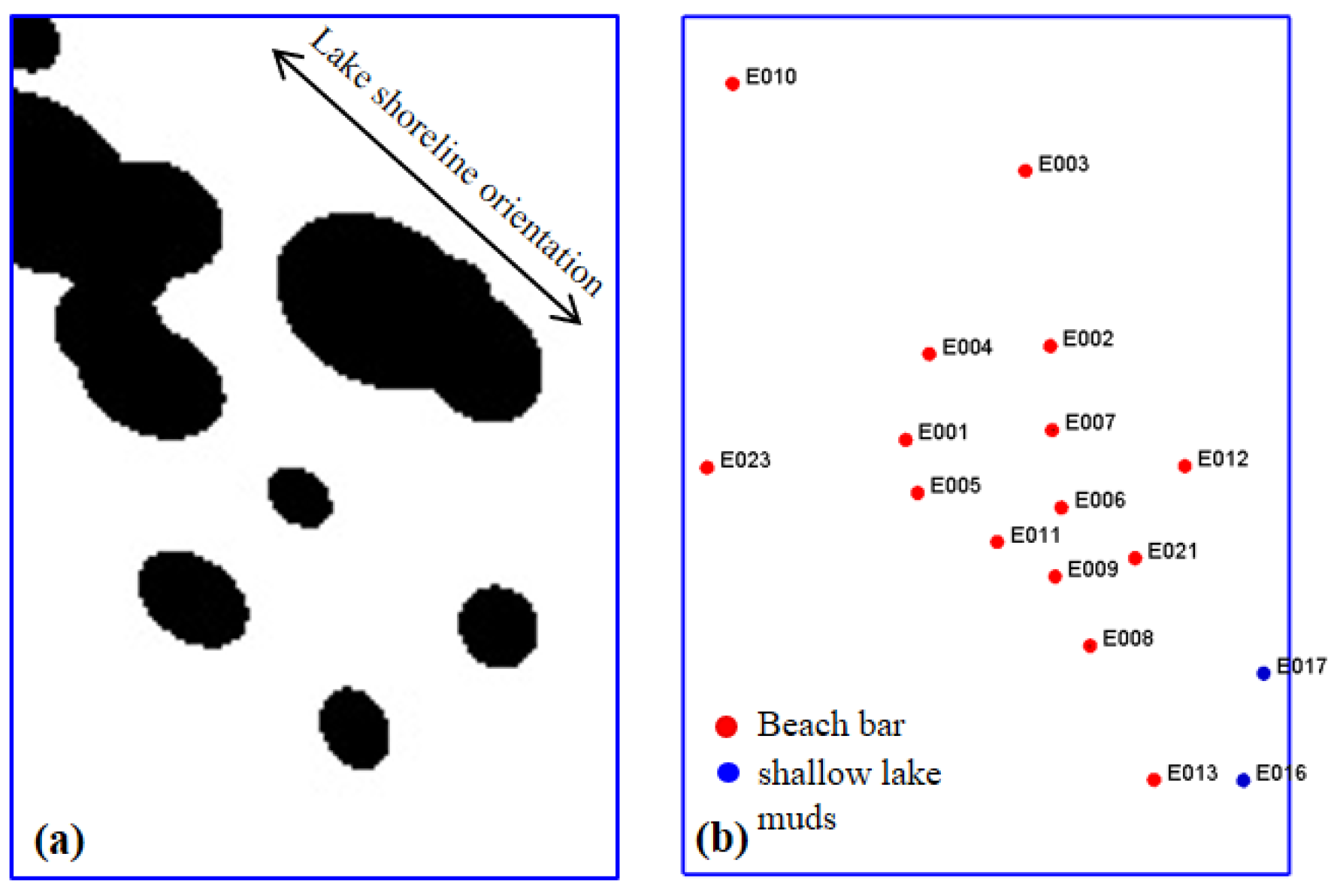
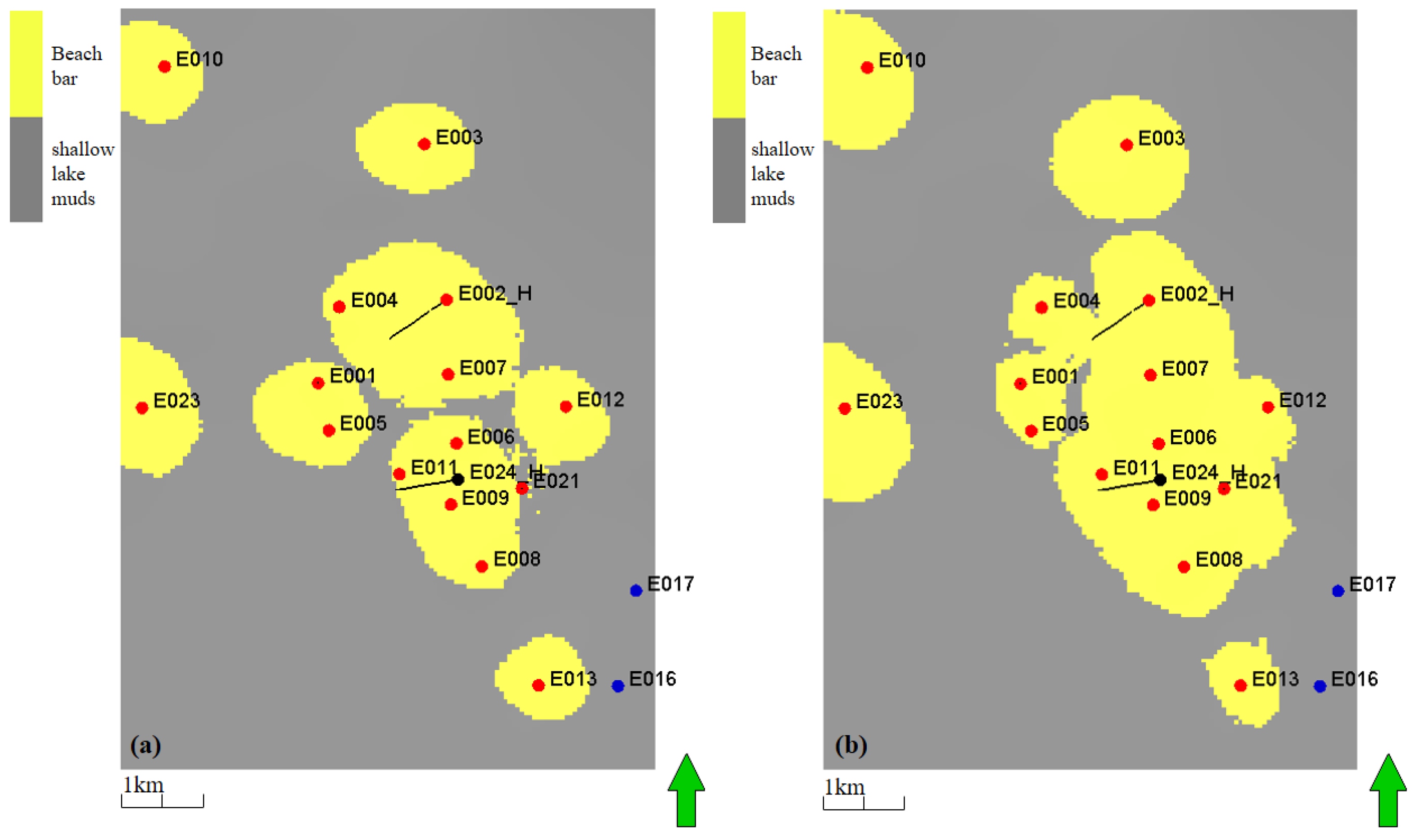
| Number of Well Points | Sand Bodies of Meandering River Main Channel (Stationary Problems, Figure 11) | Sand Bodies of Delta Plain Distributary Channel (Non-Stationary Problems, Figure 12) | ||
|---|---|---|---|---|
| Realization1 | Realization2 | Realization1 | Realization2 | |
| 50 | 100% | 100% | 100% | 100% |
| 100 | 100% | 100% | 100% | 100% |
| 200 | 100% | 100% | 100% | 99.75% |
| 400 | 99.5% | 100% | 100% | 99.75% |
Publisher’s Note: MDPI stays neutral with regard to jurisdictional claims in published maps and institutional affiliations. |
© 2021 by the authors. Licensee MDPI, Basel, Switzerland. This article is an open access article distributed under the terms and conditions of the Creative Commons Attribution (CC BY) license (https://creativecommons.org/licenses/by/4.0/).
Share and Cite
Liu, Q.; Liu, W.; Yao, J.; Liu, Y.; Pan, M. An Improved Method of Reservoir Facies Modeling Based on Generative Adversarial Networks. Energies 2021, 14, 3873. https://doi.org/10.3390/en14133873
Liu Q, Liu W, Yao J, Liu Y, Pan M. An Improved Method of Reservoir Facies Modeling Based on Generative Adversarial Networks. Energies. 2021; 14(13):3873. https://doi.org/10.3390/en14133873
Chicago/Turabian StyleLiu, Qingbin, Wenling Liu, Jianpeng Yao, Yuyang Liu, and Mao Pan. 2021. "An Improved Method of Reservoir Facies Modeling Based on Generative Adversarial Networks" Energies 14, no. 13: 3873. https://doi.org/10.3390/en14133873
APA StyleLiu, Q., Liu, W., Yao, J., Liu, Y., & Pan, M. (2021). An Improved Method of Reservoir Facies Modeling Based on Generative Adversarial Networks. Energies, 14(13), 3873. https://doi.org/10.3390/en14133873






